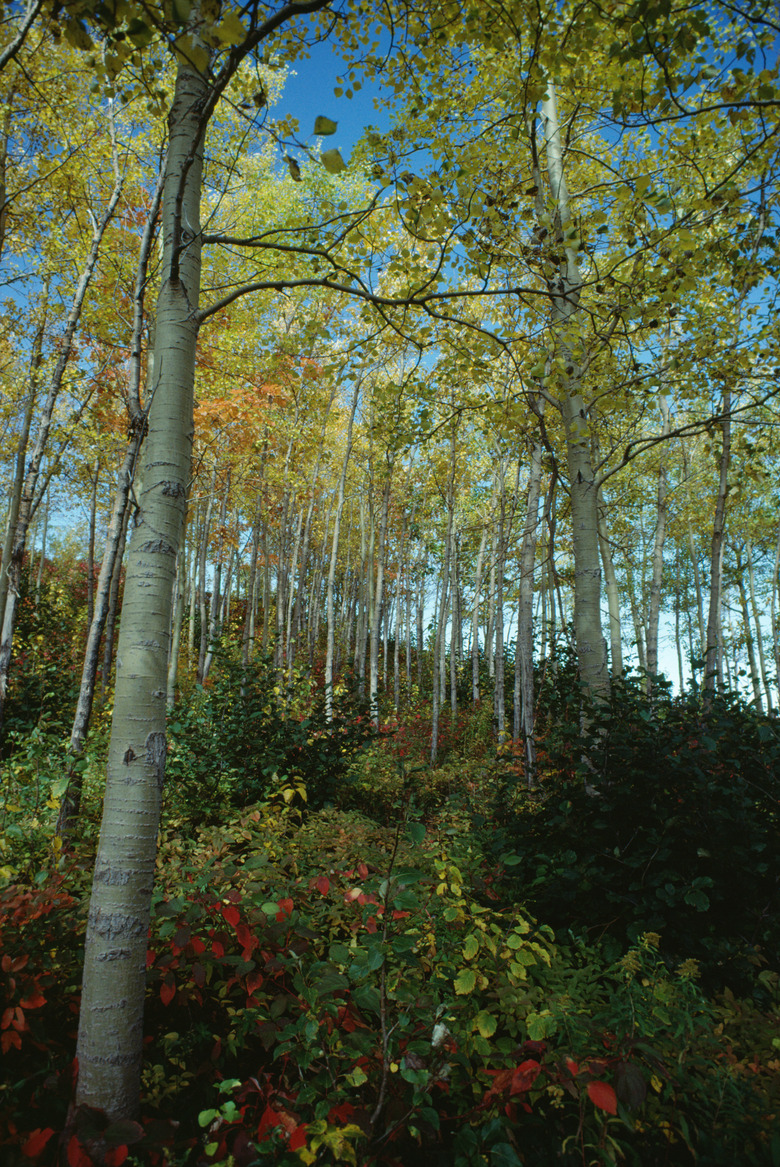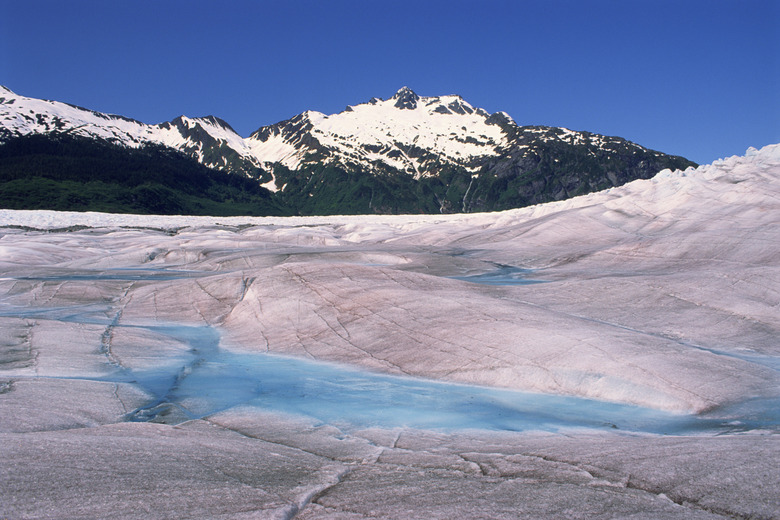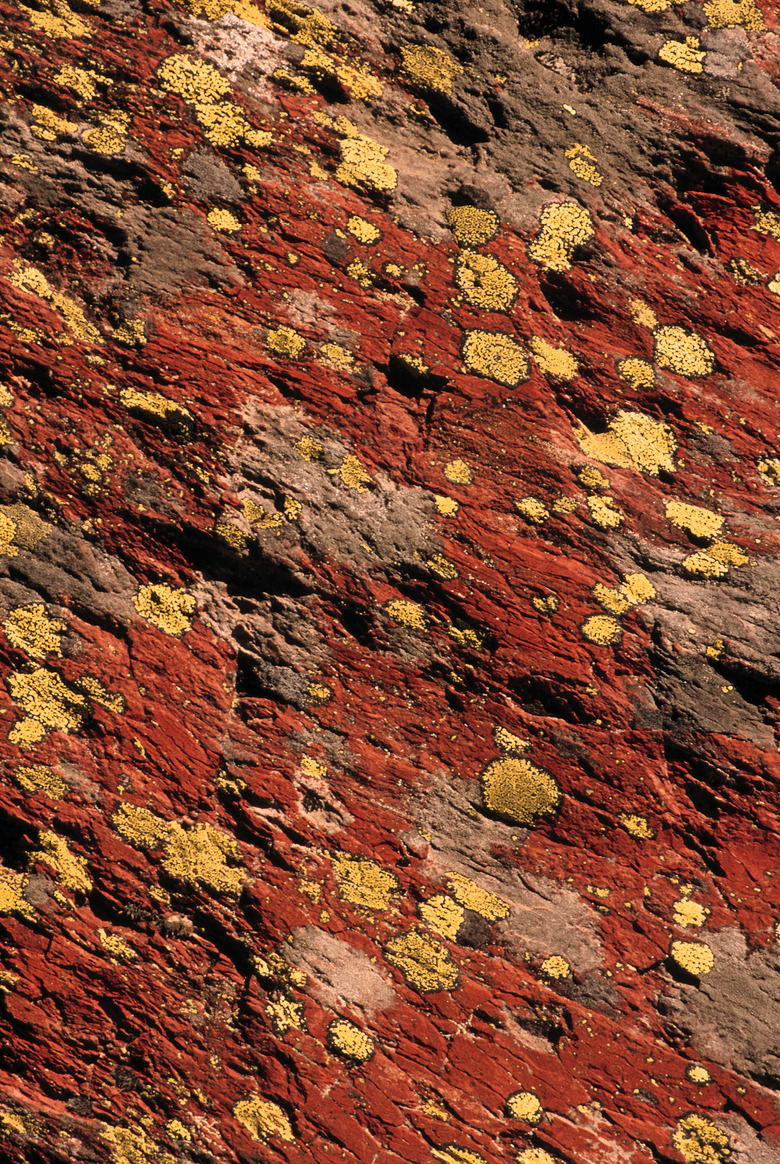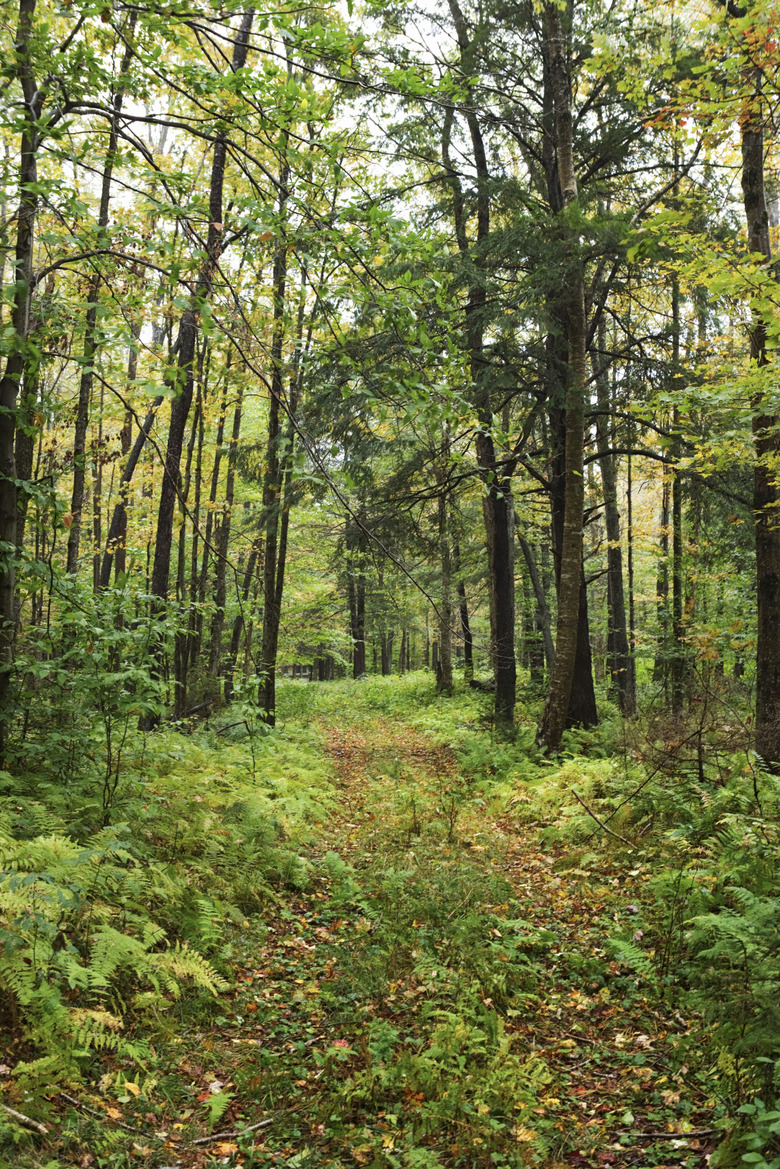Ecological Succession Of Glaciers
An area once devoid of life teems with living things following the process of succession. Glaciers, giant masses of ice, leave in their wake practically sterile land. Over time, various species take up residence in this region in a predictable manner.
Primary succession and the stages of succession describe a series of events in which species colonize a once-barren land such as one left behind when glaciers retreat. Each successive community or seral stage is defined by a change in landscape and the appearance of new species.
History of the Glaciers
History of the Glaciers
From the 1600s to the 1800s, Earth experienced what scientists call a "Little Ice Age" in which glaciers advanced on land previously uninhabited by ice. About 200 years ago, the glaciers started melting, which scientists call "glacial retreat." With the retreat of the glaciers, ridges of rock and debris called moraines remained.
Moraine is little more than bare rock and no plant life can exist on it until the first stages of succession begin. Succession that takes place in the wake of glacier retreat follows the stages of primary succession, the same process responsible for the development of life where there once was none, such as in lakes and on new islands.
Pioneer Species: The First Colonizers
Pioneer Species: The First Colonizers
Glaciers leave behind barren rocks; no soil exists to support any kind of life. The first species that arrive on this barren land left behind by glaciers are called the pioneer species. These pioneer species literally pioneer life in the area. They stabilize and enrich the soil, paving the way for plant succession to begin.
Succession usually starts with lichen, an association of algae and fungi. Lichen grows on the bare rock left behind by glaciers. Acids produced by the lichens cause the rock to crack, making room for pieces of rock and dust to accumulate in the spaces. These pieces of rock and dust form the first soil.
After the colonization of the lichen, plant succession begins at the site. Plants are the producers of a community of organisms, using natural resources such as sunlight, carbon dioxide and water to provide food for itself and the rest of the community. The very first plants in plant succession are the very small — but very essential — mosses.
Animals such as insects follow these mosses. These small animals then leave behind their waste products, which act as fertilizer for the new soil, making it even richer for other plants and animals to arrive.
Seral Stages
Seral Stages
The next stages of succession include the arrival of ferns and grasses. They extend their root systems throughout the enriched soil. These roots keep the soil stable and prevent it from blowing away. These new plants also provide a source of food for larger animals.
Once the soil has been stabilized and enriched, woody shrubs and bushes appear. These plants provide even more nourishment for larger animal species. The shrubs and bushes further enrich the soil, making way for more substantial plant life, including tall trees.
The trees compete with and ultimately replace smaller plants. Trees have access to more resources because their higher leaves can capture more sunlight and their massive, extensive root systems can reach more water and soil nutrients.
Climax Community
Climax Community
All succession tends toward what is called a climax community, which is a combination of organisms that is best suited to a region. Generally, the climax community involves the presence of a mature forest and all organisms reliant on these trees.
In a climax community, you won't see many signs of the earlier seral stages such as lichens, grasses and small shrubs. These species won't be able to compete with the resource-guzzling trees. Climax communities tend to be stable and their compositions don't change much.
The Trend of Ecological Succession
The Trend of Ecological Succession
Succession produces communities that become more diverse. Each previous community makes the environment more habitable for subsequent species. At first, only a few species can exist; as time goes by and changes occur in the environment, many more species can occupy the region because the environmental conditions have become favorable for them.
An area previously able to accommodate few organisms can now house many organisms of many different species. Autotrophs, organisms such as plants that can make their own food, increase in number and kind. With this increase in the autotroph population, the heterotrophs, organisms that must consume other organisms, also experience a boom in numbers.
Cite This Article
MLA
Dinh, Ho-Diep. "Ecological Succession Of Glaciers" sciencing.com, https://www.sciencing.com/ecological-succession-glaciers-22745/. 31 July 2019.
APA
Dinh, Ho-Diep. (2019, July 31). Ecological Succession Of Glaciers. sciencing.com. Retrieved from https://www.sciencing.com/ecological-succession-glaciers-22745/
Chicago
Dinh, Ho-Diep. Ecological Succession Of Glaciers last modified March 24, 2022. https://www.sciencing.com/ecological-succession-glaciers-22745/



